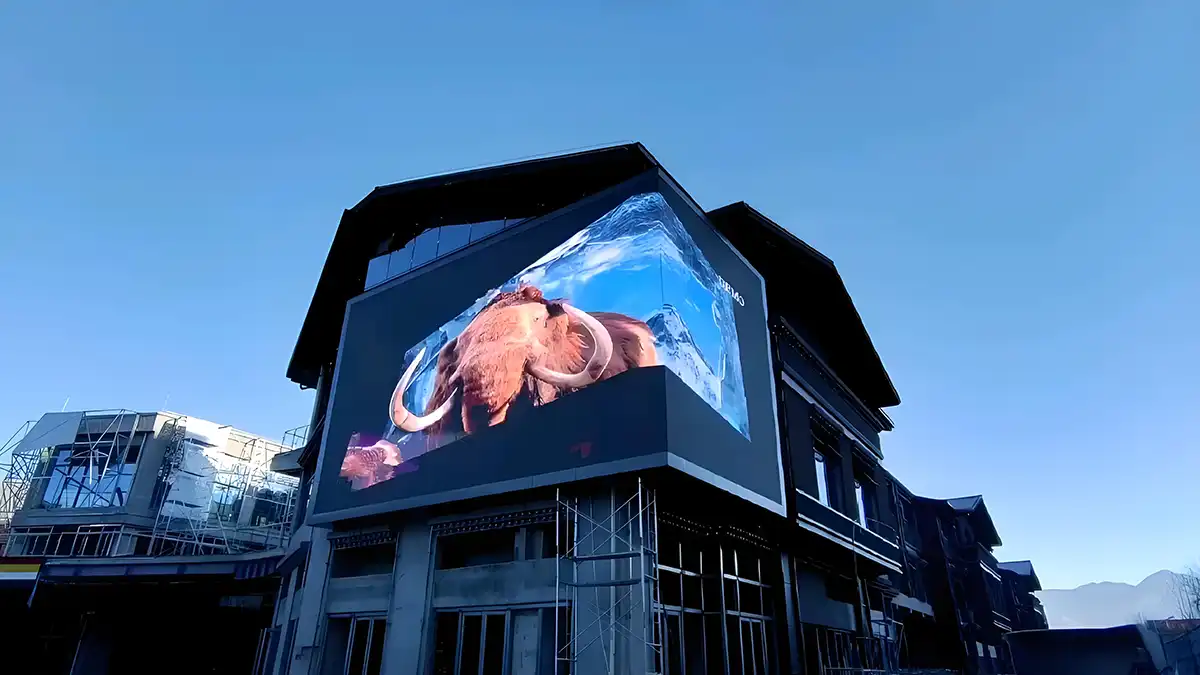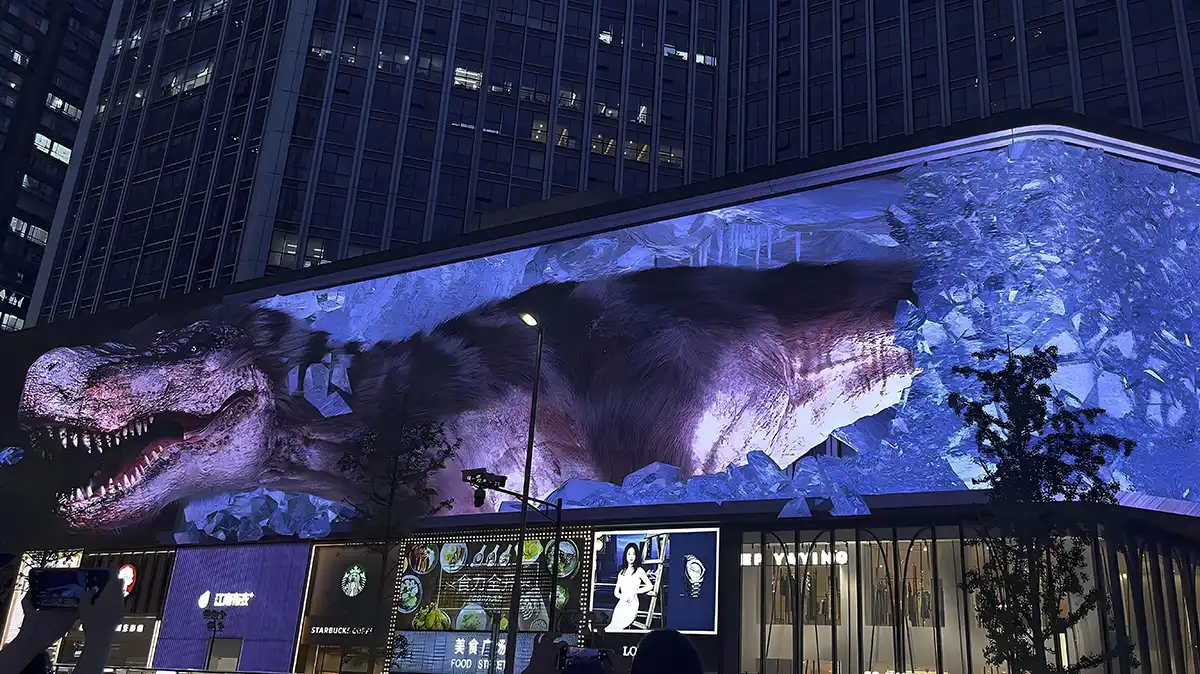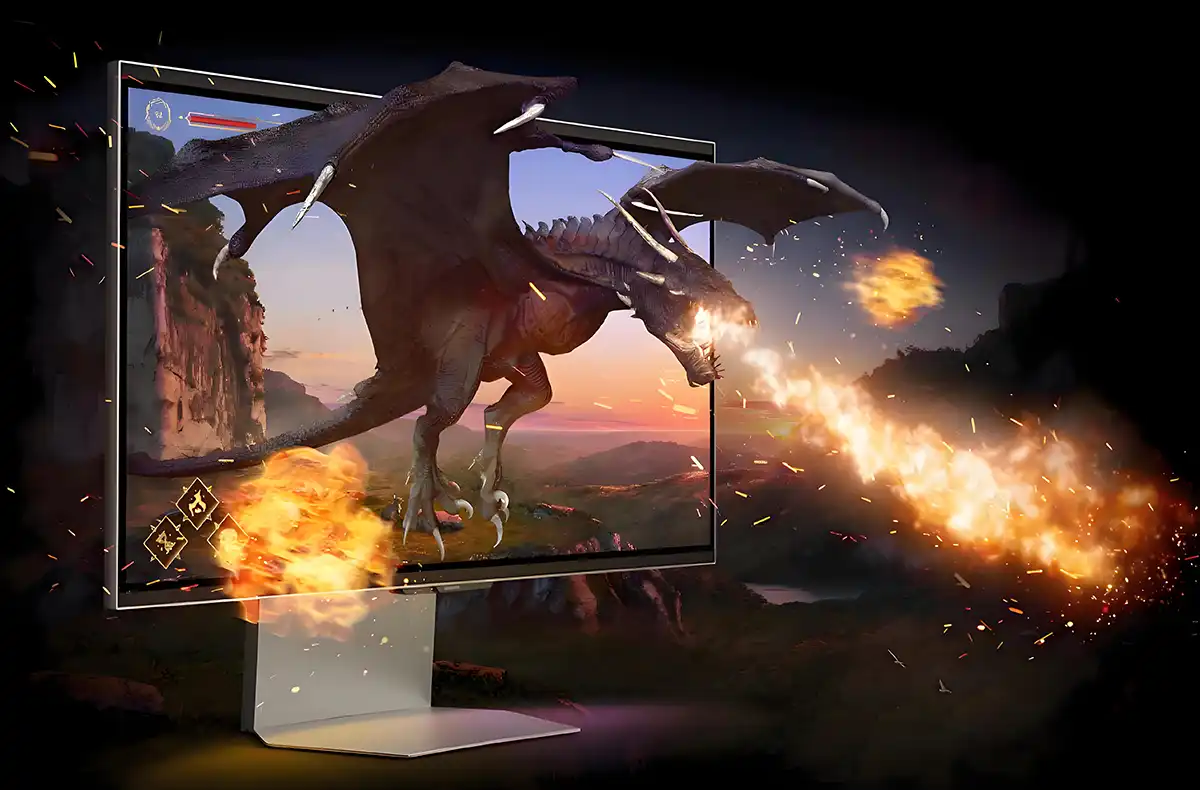3D display technology has created more immersive visual experiences in gaming, entertainment, education, and professional applications by presenting images with depth perception. Despite its advantages, many challenges remain, particularly when using LED LCD panels. These challenges include limited viewing angles, reduced resolution per eye, motion artifacts, high costs, limited content availability, and concerns about LED LCD lifespan. Addressing these issues is crucial for achieving better performance, visual comfort, and long-term display reliability.
3D displays create the illusion of depth by delivering separate images to each eye or projecting volumetric images into space. The technology can rely on stereoscopic imaging, autostereoscopic methods, holographic projections, or volumetric display systems. In LED LCD 3D displays, the quality of the backlight and LCD panel determines brightness, contrast, and image stability.
Stereoscopic Displays: Require glasses to separate left and right images.
Autostereoscopic Displays: Glasses-free systems using lenses or parallax barriers.
Holographic Displays: Create volumetric 3D images visible from multiple angles.
Volumetriset näytöt: Project light into a three-dimensional space for applications like medical imaging and industrial visualization.
 Technical Challenges
Technical ChallengesAutostereoscopic displays often have narrow optimal viewing zones. Moving outside these zones can distort images or eliminate the 3D effect. LED LCD panels may also lose brightness and contrast at off-axis positions.
Stereoscopic 3D divides the screen resolution between both eyes, reducing clarity for each eye. Crosstalk occurs when pixels intended for one eye are partially visible to the other, creating ghosting and reducing visual comfort.
Fast-moving content can create motion blur and flicker. The refresh rate and response time of LED LCD panels are critical for minimizing these effects. Low-performance panels may intensify motion artifacts, causing viewer discomfort.
LED backlights degrade over time due to high temperatures, maximum brightness settings, and continuous operation. Typical lifespans range from 50,000 to 100,000 hours, but extended use without proper cooling can shorten panel longevity.
Prolonged viewing of 3D displays can lead to eye strain, headaches, or nausea, often caused by a mismatch between eye focus and perceived depth. Uneven brightness and poor panel calibration can exacerbate these effects.
Some users cannot fuse left and right images properly, especially when content contains complex depth or fast motion. LED LCD displays with inaccurate calibration may worsen depth perception issues.
Lapset, iäkkäät aikuiset ja näkövammaiset henkilöt voivat kokea vaikeuksia nähdä 3D-tehosteita. Säädettävä kirkkaus ja kontrasti voivat auttaa vähentämään epämukavuutta, mutta eivät välttämättä ratkaise täysin havainto-ongelmia.

Natiivi 3D-sisältö, kuten elokuvat, pelit ja opetusmateriaalit, on edelleen niukasti saatavilla. Sisällön tuottaminen LED LCD 3D -näyttöihin vaatii usein korkeampia tuotantokustannuksia ja erikoisasiantuntemusta.
3D-sisältö ei välttämättä toimi yhdenmukaisesti eri näyttötyypeissä. Stereoskooppiset, autostereoskooppiset ja holografiset näytöt vaativat usein eri formaatteja.
LED LCD 3D -näytöt maksavat tyypillisesti enemmän kuin tavalliset 2D-näytöt, erityisesti suuret, korkean resoluution paneelit. Lasipohjaiset järjestelmät vaativat myös lisävarusteita, mikä nostaa kokonaiskustannuksia.
LED-LCD-paneelien kalibrointi ja kohdistaminen on välttämätöntä kuvanlaadun ylläpitämiseksi.
Taustavalon vaihto tai paneelin korjaus voi olla kallista.
Korkeat kustannukset, epämukavuus ja rajallinen sisältö vähentävät käyttöönottoa kodeissa ja pienissä toimistoissa.
Haaste | Kuvaus | Vaikutus | Mahdollinen lähestymistapa |
Katselukulma | Kapeat optimaaliset vyöhykkeet | 3D-efektin menetys akselin ulkopuolella | Moninäkymäpaneelit, linssin optimointi |
Resoluutio | Kuvat jakautuvat silmien välillä | Vähentynyt selkeys | Korkeamman resoluution paneelit, parempi skaalaus |
Ylikuuluminen | Pikseleitä vuotaa vastakkaiseen silmään | Haamukuva, rasitus | Paneelin kalibrointi, parannettu optiikka |
Liikeartefaktit | Sumeneminen/välkkyminen nopeassa liikkeessä | Epämukavuus, pahoinvointi | Korkea virkistystaajuus, nopea reagointikykyinen LCD-näyttö |
LED-heikkeneminen | Taustavalo himmenee ajan myötä | Lyhyempi käyttöikä, epätasainen kirkkaus | Kohtalainen kirkkaus, tehokas jäähdytys |
Sisällön niukkuus | Rajoitetusti saatavilla olevaa mediaa | Vähemmän käytettyjä tapauksia | Kannusta 3D-sisällön tuotantoa |
Maksaa | Kallis laitteisto | Rajoitettu käyttöönotto | Edullisia paneeleja, irtotuotanto |
Lämpötila:Liiallinen kuumuus nopeuttaa taustavalon heikkenemistä.
Kirkkaus:Jatkuvasti korkea kirkkaus lyhentää LEDien käyttöikää.
Jatkuva käyttö:Ilman taukoja toimivat paneelit kuluvat nopeammin.
Ympäristötekijät:Pöly ja kosteus voivat vahingoittaa sisäisiä komponentteja.
Varmista asianmukainen jäähdytys ja ilmanvaihto.
Vähennä kirkkautta optimaaliselle tasolle maksimitason sijaan.
Aikatauluta seisokkiaika, jotta paneelit voivat levätä.
Puhdista paneelit säännöllisesti pölyn kertymisen estämiseksi.
Autostereoskooppinen teknologia paranee kehittyneiden linssien ja valokenttänäyttöjen ansiosta, mikä vähentää silmälasien tarvetta.
Uudet LED LCD -paneelit tarjoavat yli 4K-tarkkuuden silmää kohden ja yli 120 Hz:n virkistystaajuuden, mikä minimoi haamukuvan ja välkkymisen.
Algoritmit voivat säätää kirkkautta, kontrastia ja väriä dynaamisesti kuvanlaadun ylläpitämiseksi ja silmien rasituksen vähentämiseksi.
LED LCD 3D -näyttöjen yhdistäminen virtuaali- tai lisättyyn todellisuuteen parantaa katseluelämystä ja vähentää katselukulman rajoituksia.

Kysymys 1:Mikä on LED LCD 3D -näytön käyttöikä?
A:Tyypillisesti 50 000–100 000 tuntia käytöstä, kirkkaudesta ja jäähdytyksestä riippuen.
Kysymys 2:Miten liikkeestä aiheutuvia artefakteja voidaan minimoida?
A:Korkean virkistystaajuuden paneelien ja nopean LCD-tekniikan käyttö vähentää epätarkkuutta ja välkkymistä.
K3:Sopivatko LED LCD 3D -näytöt lapsille?
A:Säädettävä kirkkaus ja kontrasti auttavat, mutta näkörajoitukset voivat vaikuttaa havainnointiin.
K4:Miksi kuvanlaatu heikkenee ajan myötä?
A:LED-taustavalon kirkkaus heikkenee käytön myötä, mikä heikentää kirkkautta ja värien tarkkuutta.
K5:Voivatko ohjelmistopäivitykset parantaa paneelin käyttöikää?
A:Laiteohjelmistopäivitykset voivat optimoida suorituskyvyn ja vähentää LED-taustavalojärjestelmän kuormitusta.
3D-näyttötekniikka LED LCD -paneeleilla tarjoaa mukaansatempaavia kokemuksia, mutta kohtaa useita haasteita. Rajoitetut katselukulmat, alhaisempi resoluutio silmää kohden, liikeartefaktat, silmien rasittuminen, sisällön niukkuus, korkeat kustannukset ja LED-taustavalon heikkeneminen vaikuttavat kaikki käytettävyyteen ja pitkän aikavälin suorituskykyyn. Oikean kirkkauden ylläpitäminen, jäähdytyksen varmistaminen, näyttöjen kalibrointi ja uusien paneeliteknologioiden käyttöönotto voivat parantaa käyttömukavuutta, suorituskykyä ja käyttöikää. Lasittoman 3D:n, korkeamman resoluution, tekoälyn säädön ja VR/AR-integraation edistysaskeleet lupaavat voittaa nykyiset rajoitukset ja laajentaa 3D LED LCD -näyttöjen käytännön sovelluksia.
Oikea käyttö, kohtuullinen kirkkaus ja säännöllinen huolto ovat välttämättömiä 3D LED LCD -näyttöjen suorituskyvyn ylläpitämiseksi ja käyttöiän pidentämiseksi samalla, kun ne säilyttävät korkealaatuisen visuaalisen kokemuksen.
Kuumia suosituksia
Kuumat tuotteet
Hanki ilmainen tarjous heti!
Ota yhteyttä myyntitiimiimme nyt.
Jos olet kiinnostunut tuotteistamme, ota meihin pikaisesti yhteyttä
Ota yhteyttä myyntitiimiimme tutkiaksesi räätälöityjä ratkaisuja, jotka vastaavat täydellisesti yrityksesi tarpeita, ja vastaa kaikkiin kysymyksiisi.
Sähköpostiosoite:info@reissopto.comTehdasosoite:Building 6, Huike Flat Panel Display Industrial Park, No. 1, Gongye 2nd Road, Shiyan Shilong Community, Bao'an District, Shenzhen City, Kiina
whatsapp:+8615217757270